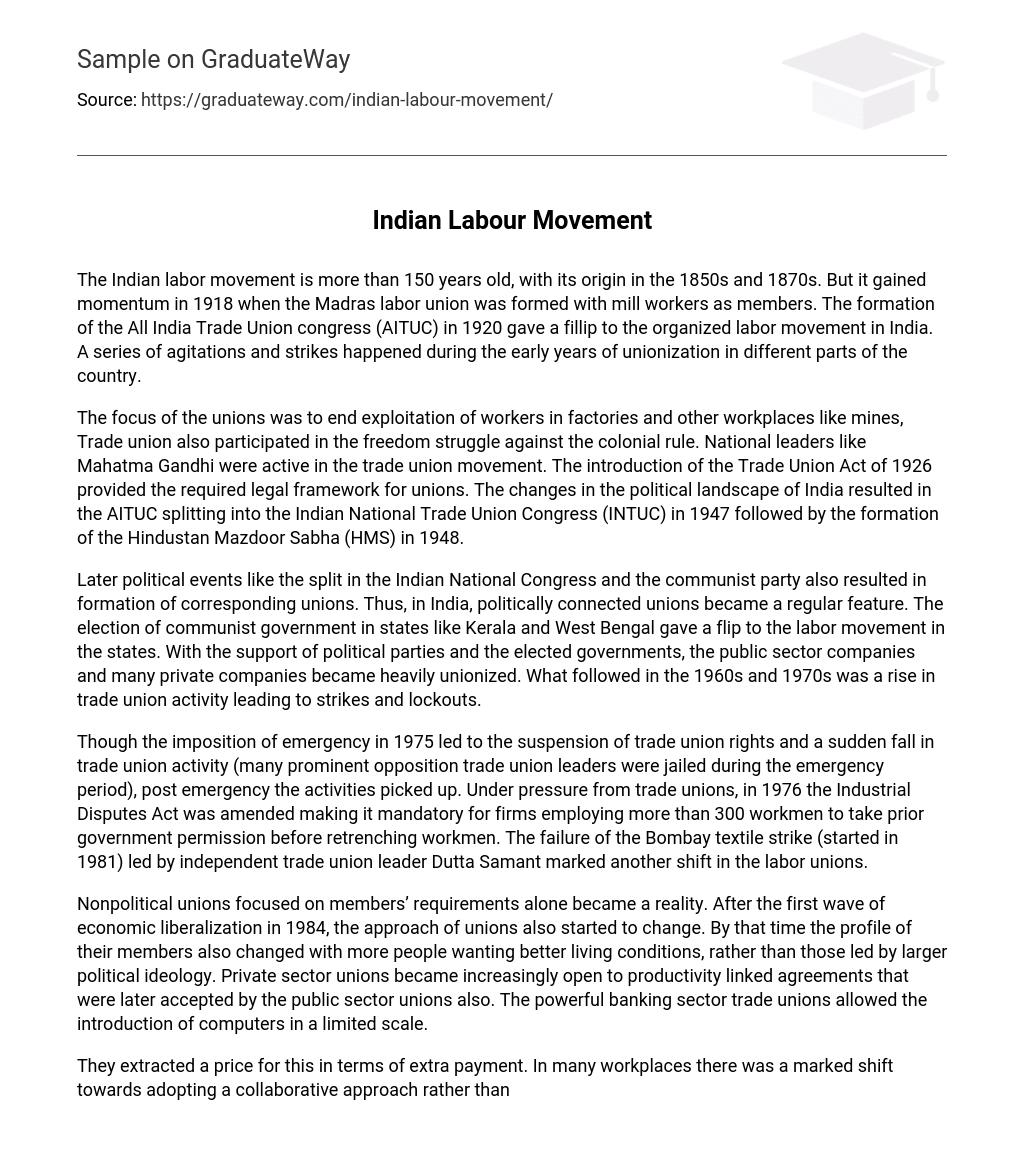The Indian labor movement is more than 150 years old, with its origin in the 1850s and 1870s. But it gained momentum in 1918 when the Madras labor union was formed with mill workers as members. The formation of the All India Trade Union congress (AITUC) in 1920 gave a fillip to the organized labor movement in India. A series of agitations and strikes happened during the early years of unionization in different parts of the country.
The focus of the unions was to end exploitation of workers in factories and other workplaces like mines, Trade union also participated in the freedom struggle against the colonial rule. National leaders like Mahatma Gandhi were active in the trade union movement. The introduction of the Trade Union Act of 1926 provided the required legal framework for unions. The changes in the political landscape of India resulted in the AITUC splitting into the Indian National Trade Union Congress (INTUC) in 1947 followed by the formation of the Hindustan Mazdoor Sabha (HMS) in 1948.
Later political events like the split in the Indian National Congress and the communist party also resulted in formation of corresponding unions. Thus, in India, politically connected unions became a regular feature. The election of communist government in states like Kerala and West Bengal gave a flip to the labor movement in the states. With the support of political parties and the elected governments, the public sector companies and many private companies became heavily unionized. What followed in the 1960s and 1970s was a rise in trade union activity leading to strikes and lockouts.
Though the imposition of emergency in 1975 led to the suspension of trade union rights and a sudden fall in trade union activity (many prominent opposition trade union leaders were jailed during the emergency period), post emergency the activities picked up. Under pressure from trade unions, in 1976 the Industrial Disputes Act was amended making it mandatory for firms employing more than 300 workmen to take prior government permission before retrenching workmen. The failure of the Bombay textile strike (started in 1981) led by independent trade union leader Dutta Samant marked another shift in the labor unions.
Nonpolitical unions focused on members’ requirements alone became a reality. After the first wave of economic liberalization in 1984, the approach of unions also started to change. By that time the profile of their members also changed with more people wanting better living conditions, rather than those led by larger political ideology. Private sector unions became increasingly open to productivity linked agreements that were later accepted by the public sector unions also. The powerful banking sector trade unions allowed the introduction of computers in a limited scale.
They extracted a price for this in terms of extra payment. In many workplaces there was a marked shift towards adopting a collaborative approach rather than a confrontationist approach. The next phase of economic reforms introduced in 1992 focused on the opening of the economy and integrating with global economic forces. Privatization of state owned enterprises and the closing down of unviable ones were part of reform package. The voluntary retirement scheme (VRS) became a legal option for firms to separate excess employees on mutual agreement.
The national renewal fund (NRF) was established to help firms adjust to the new economy realities. Currently, many traditional unions both in public and private sectors have recognized the significance of market forces and competition and are prepared to work with the management to increase competitiveness. While the industry and investors demanded reforming the labor to introduce more flexibility and the hire and fire, due to opposition from national unions such progress could not be made.
The emerging new generation IT / ITES sector saw firms where labor union activity was absent. The career and professional growth focused employees showed antipathy toward unions and their employers went ahead to ensure good conditions of work. Though there have been discussions about introducing trade union activity in the new sectors, not much progress could not be made. Similar non-union firms are functional in the traditionally unionized sectors like manufacturing and services (for example the new private banks are completely trade union free).





